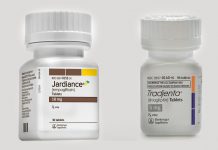Diabetes is a chronic metabolic condition characterized by hyperglycemia, meaning high blood glucose levels. Insulin plays a key role in moving the glucose from your blood into your cells, where it is used for energy, according to Healthline.
People with type 1 diabetes lack insulin, those with type 2 diabetes are not able to respond to insulin, a condition called insulin resistance. Uncontrolled diabetes could lead to potentially life-threatening complications.
Some of the common diabetic complications include high blood pressure, heart disease, nerve damage (neuropathy), kidney failure (nephropathy), vision impairment (retinopathy), and gangrene or diabetic foot.
People with type 1 diabetes have to take insulin in order to keep their blood sugar under control. Type 2 diabetes can be effectively managed with oral hypoglycemic agents (OHAs). Some people with type 2 diabetes may also need insulin. The goal is to keep your blood glucose within a specific range.
Healthline advises including foods rich in dietary fiber and healthy carbohydrates in your diet, eating fruits, vegetables, and whole grains, and more importantly, eating at regular intervals.
“Control your weight and keep your heart healthy,” it recommends, “which means keeping refined carbohydrates, sweets, and animal fats to a minimum.”
Type 2 diabetics should get at least half an hour of exercise daily to help keep their heart healthy. In addition, physical activity helps one to control blood glucose levels.
Healthline says, “Your doctor will explain how to recognize the early symptoms of blood sugar that’s too high or too low and what to do in each situation. They’ll also help you learn which foods are healthy and which foods aren’t.”
In some people, lifestyle changes are enough to keep type 2 diabetes under control, but others need OHAs, such as metformin, sulfonylureas, meglitinides, thiazolidinediones, among others.
Diet plays a key role in keeping your blood glucose levels under control. Healthline suggests the following recommendations:
- Eat meals and snacks on schedule.
- Choose a variety of foods that are high in nutrients and low in empty calories.
- Be careful not to overeat.
- Read food labels closely.
People with diabetes should stay away from foods rich in saturated or trans fats, red meat, processed meat, shellfish, baked goods, processed snacks, sugary sodas and drinks, high-fat dairy products, and pasta or white rice. It is important for them to avoid salty foods and fried foods.
Healthline advises you to “talk to your doctor about your personal nutrition and calorie goals.” It says this will help you to come up with a diet plan that can keep your glucose levels under control. “Explore carb counting and the Mediterranean diet, along with other approaches,” it adds. For more information, read the article titled “Understanding Type 2 Diabetes” published online on Healthline.





















